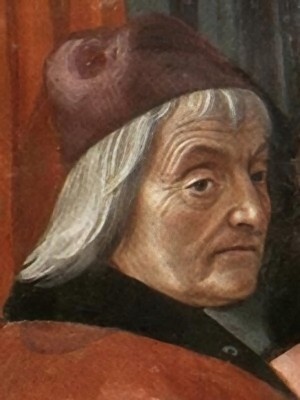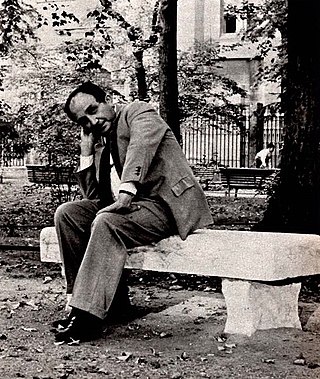Related Research Articles

Giovanni Boccaccio was an Italian writer, poet, correspondent of Petrarch, and an important Renaissance humanist. Born in the town of Certaldo, he became so well known as a writer that he was sometimes simply known as "the Certaldese" and one of the most important figures in the European literary panorama of the fourteenth century. Some scholars define him as the greatest European prose writer of his time, a versatile writer who amalgamated different literary trends and genres, making them converge in original works, thanks to a creative activity exercised under the banner of experimentalism.

Giosuè Alessandro Giuseppe Carducci was an Italian poet, writer, literary critic and teacher. He was very noticeably influential, and was regarded as the official national poet of modern Italy. In 1906, he became the first Italian to receive the Nobel Prize in Literature. The Swedish Academy's motivation was that "not only in consideration of his deep learning and critical research, but above all as a tribute to the creative energy, freshness of style, and lyrical force which characterize his poetic masterpieces."

Francesco Petrarca, commonly anglicized as Petrarch, was a scholar and poet of the early Italian Renaissance, and one of the earliest humanists.

Vittoria Colonna, marchioness of Pescara, was an Italian noblewoman and poet. As an educated, married noblewoman whose husband was in captivity, Colonna was able to develop relationships within the intellectual circles of Ischia and Naples. Her early poetry began to attract attention in the late 1510s and she ultimately became one of the most popular poets of 16th-century Italy. Upon the early death of her husband, she took refuge at a convent in Rome. She remained a laywoman but experienced a strong spiritual renewal and remained devoutly religious for the rest of her life. Colonna is also known to have been a muse to Michelangelo Buonarroti, himself a poet.

Pietro Bembo, O.S.I.H. was an Italian scholar, poet, and literary theorist who also was a member of the Knights Hospitaller, and a cardinal of the Roman Catholic Church. As an intellectual of the Italian Renaissance, Pietro Bembo greatly influenced the development of the Tuscan dialect as a literary language for poetry and prose, which, by later codification into a standard language, became the modern Italian language. In the 16th century, Bembo's poetry, essays and books proved basic to reviving interest in the literary works of Petrarch. In the field of music, Bembo's literary writing techniques helped composers develop the techniques of musical composition that made the madrigal the most important secular music of 16th-century Italy.
Novus homo or homo novus was the term in ancient Rome for a man who was the first in his family to serve in the Roman Senate or, more specifically, to be elected as consul. When a man entered public life on an unprecedented scale for a high communal office, then the term used was novus civis or "new citizen".

Guido Cavalcanti was an Italian poet. He was also a friend and intellectual influence on Dante Alighieri.

Italian literature is written in the Italian language, particularly within Italy. It may also refer to literature written by Italians or in other languages spoken in Italy, often languages that are closely related to modern Italian, including regional varieties and vernacular dialects.

Giovanni della Casa was a Florentine poet, diplomat, clergyman and inquisitor, and writer on etiquette and society. He is celebrated for his famous treatise on polite behavior, Il Galateo overo de’ costumi (1558). From the time of its publication, this courtesy book has enjoyed enormous success and influence. In the eighteenth century, influential critic Giuseppe Baretti wrote in The Italian Library (1757), "The little treatise is looked upon by many Italians as the most elegant thing, as to stile, that we have in our language."

Cino da Pistoia was an Italian jurist and poet.

Cristoforo Landino was an Italian humanist and an important figure of the Florentine Renaissance.
Pier Paolo Vergerio was an Italian humanist, statesman, pedagogist and canon lawyer.
The decade of the 1490s in art involved some significant events.
SixtBirck, as Xystus Betuleius was a German humanist of Augsburg, "a notable German scholar of the New Learning".

Jean Miélot, also Jehan, was an author, translator, manuscript illuminator, scribe and priest, who served as secretary to Philip the Good, Duke of Burgundy from 1449 to Philip's death in 1467, and then to his son Charles the Bold. He also served as chaplain to Louis of Luxembourg, Count of St. Pol from 1468, after Philip's death. He was mainly employed in the production of de luxe illuminated manuscripts for Philip's library. He translated many works, both religious and secular, from Latin or Italian into French, as well as writing or compiling books himself, and composing verse. Between his own writings and his translations he produced some twenty-two works whilst working for Philip, which were widely disseminated, many being given printed editions in the years after his death, and influenced the development of French prose style.
Fulgens and Lucrece is a late 15th-century interlude by Henry Medwall. It is the earliest purely secular English play that survives. Since John Cardinal Morton, for whom Medwall wrote the play, died in 1500, the work must have been written before that date. It was probably first performed at Lambeth Palace in 1497, while Cardinal Morton was entertaining ambassadors from Spain and Flanders. The play is based on a Latin novella by Buonaccorso da Montemagno that had been translated into English by John Tiptoft, 1st Earl of Worcester and published in 1481 by William Caxton. The play was printed in 1512–1516 by John Rastell, and was later only available as a fragment until a copy showed up in an auction of books from Lord Mostyn's collection in 1919. Henry E. Huntington acquired this copy, and arranged the printing of a facsimile. The play is an example of a dramatised débat.

Alfonso Gatto was an Italian writer. Along with Giuseppe Ungaretti he is one of the foremost Italian poets of the 20th century and a major exponent of hermetic poetry.
Chiara Matraini (1515–1604) was an Italian Renaissance writer from Lucca. Primarily known for her love poetry, composed in the style of Petrarch, she also authored a number of spiritual prose and verse texts. Matraini wrote throughout her long life, publishing her last text, the Dialoghi spirituali (1602), when she was well into her 80s. Her many projects included genres that were uncommon for women writers of her time, such as an oration on the art of war, a translation from Latin to vernacular, and several didactic religious texts. Matraini's writing demonstrates an eagerness to compose in an authoritative voice.

Giovanni Rucellai, known as Giovanni di Bernardo Rucellai, was an Italian humanist, poet, dramatist and man of letters in Renaissance Florence, in Tuscany, Italy. A member of a wealthy family of wool merchants and one of the richest men in Florence, he was cousin to Pope Leo X and linked by marriage to the powerful Strozzi and de' Medici families. He was born in Florence, and died in Rome. He was the son of Bernardo Rucellai (1448–1514) and his wife Nannina de' Medici (1448–1493), and the grandson of Giovanni di Paolo Rucellai (1403–1481). He is now remembered mostly for his poem Le Api, one of the first poems composed in versi sciolti to achieve widespread acclaim.
Isabella Cervoni was an Italian poet of the Counter-Reformation period, active between 1590 and 1600. She wrote encomiastic and polemical poems addressed to numerous secular and religious dignitaries of the Italian Renaissance, including Pope Clement VIII, Maria de' Medici, Christina of Lorraine and Henry IV of France. She was praised for her talent and ambition by Cristoforo Bronzini in his 1625 dialogue Della dignità delle donne, dialogo…settimana prima e giornata quarta as having "given the world many beautiful and spiritual compositions" despite her "most tender age."
References
- ↑ Giuliari, 1874:xvii.